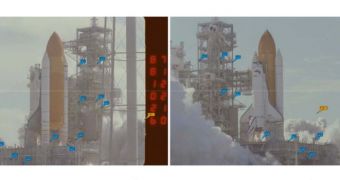Debris falling off the external fuel tank was the main reason why space shuttle Columbia was lost on February 1, 2003. The flying foam breached the structural integrity of the heat shield, and broke a few ceramic tiles apart. Upon atmospheric reentry, the spacecraft's wing came under extreme stress from soaring temperatures, and eventually got ripped apart, destroying the shuttle and killing all seven astronauts aboard. To avoid similar incidents, a team of NASA engineers is pondering the use of a particle-accelerator technology that could help determine the danger posed by debris during a launch.
Since the unfortunate accident, the American space agency has set a large number of additional safety protocols in place, such as the mandatory two heat-shield inspections, which are now performed during every shuttle flight. One takes place as soon as the craft reaches the orbit, while the second the day before reentry. However, experts admit that microasteroids could slam into the heat shield at any time, and that such an incident could have disastrous consequences. The best thing would be to ensure that, upon launch, the shuttle is in the best shape possible for the flight.
The NASA team plans to convert a data-monitoring method used in the Large Hadron Collider, in order to keep track of the falling debris during a launch. In the world's largest particle accelerator, billions of collisions per second will generate a massive amount of data that will have to be processed in real time by a special filter, which will then discard common data, and retain only the information and trajectories of interest. This mechanism allows the scientists at the LHC to obtain about 100 trajectories of interest, from countless others.
Kennedy Space Center expert Philip Metzger, the leader of the NASA engineering team, has already built the first stage filter of this monitoring system, and plans to use it in combination with two high-resolution cameras, placed at specific angles in respect to the two launch pads at the sea-side facility. When stitched together, the images would offer a 3D view of the falling pieces of debris, allowing scientists to compile their trajectories and ascertain the threat levels each of them poses on the heat shield. The purpose of the LHC-derived filter is to comb through the data, and highlight only the debris clumps that are dense and fast enough to cause damage to the ship.
The main advantage in the new system, Technology Review reports, is that the method will be used in real time, which will allow mission controllers to make informed decisions about fixing the shuttle in mid-flight. All spacecraft now have kits aboard that allow astronauts to perform emergency repairs while in orbit.

 14 DAY TRIAL //
14 DAY TRIAL //